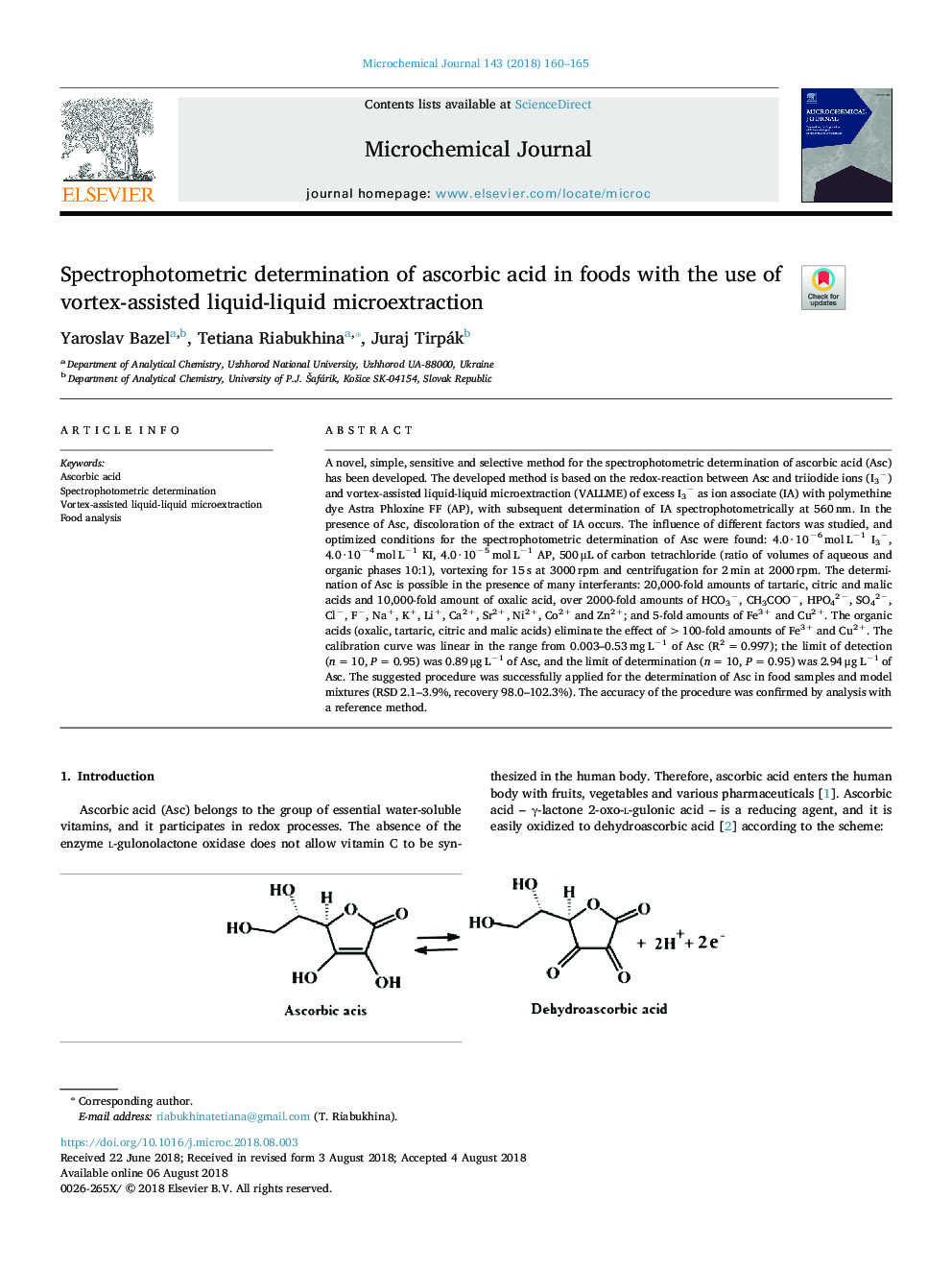| Article ID | Journal | Published Year | Pages | File Type |
|---|---|---|---|---|
| 7639856 | Microchemical Journal | 2018 | 6 Pages |
Abstract
A novel, simple, sensitive and selective method for the spectrophotometric determination of ascorbic acid (Asc) has been developed. The developed method is based on the redox-reaction between Asc and triiodide ions (I3â) and vortex-assisted liquid-liquid microextraction (VALLME) of excess I3â as ion associate (IA) with polymethine dye Astra Phloxine FF (AP), with subsequent determination of IA spectrophotometrically at 560â¯nm. In the presence of Asc, discoloration of the extract of IA occurs. The influence of different factors was studied, and optimized conditions for the spectrophotometric determination of Asc were found: 4.0â¯Â·â¯10â6â¯molâ¯Lâ1 I3â, 4.0â¯Â·â¯10â4â¯molâ¯Lâ1 KI, 4.0â¯Â·â¯10â5â¯molâ¯Lâ1 AP, 500â¯Î¼L of carbon tetrachloride (ratio of volumes of aqueous and organic phases 10:1), vortexing for 15â¯s at 3000â¯rpm and centrifugation for 2â¯min at 2000â¯rpm. The determination of Asc is possible in the presence of many interferants: 20,000-fold amounts of tartaric, citric and malic acids and 10,000-fold amount of oxalic acid, over 2000-fold amounts of HCO3â, CH3COOâ, HPO42â, SO42â, Clâ, Fâ, Na+, K+, Li+, Ca2+, Sr2+, Ni2+, Co2+ and Zn2+; and 5-fold amounts of Fe3+ and Cu2+. The organic acids (oxalic, tartaric, citric and malic acids) eliminate the effect of >100-fold amounts of Fe3+ and Cu2+. The calibration curve was linear in the range from 0.003-0.53â¯mgâ¯Lâ1 of Asc (R2â¯=â¯0.997); the limit of detection (nâ¯=â¯10, Pâ¯=â¯0.95) was 0.89â¯Î¼gâ¯Lâ1 of Asc, and the limit of determination (nâ¯=â¯10, Pâ¯=â¯0.95) was 2.94â¯Î¼gâ¯Lâ1 of Asc. The suggested procedure was successfully applied for the determination of Asc in food samples and model mixtures (RSD 2.1-3.9%, recovery 98.0-102.3%). The accuracy of the procedure was confirmed by analysis with a reference method.
Related Topics
Physical Sciences and Engineering
Chemistry
Analytical Chemistry
Authors
Yaroslav Bazel, Tetiana Riabukhina, Juraj Tirpák,
